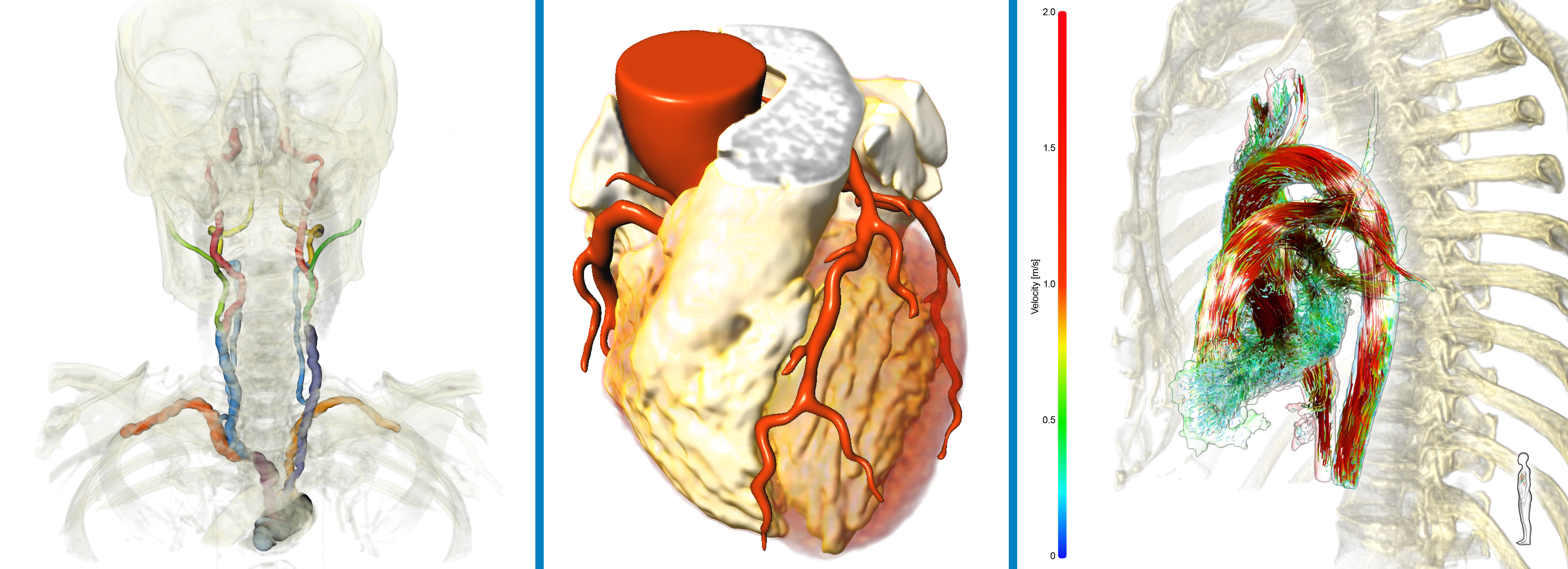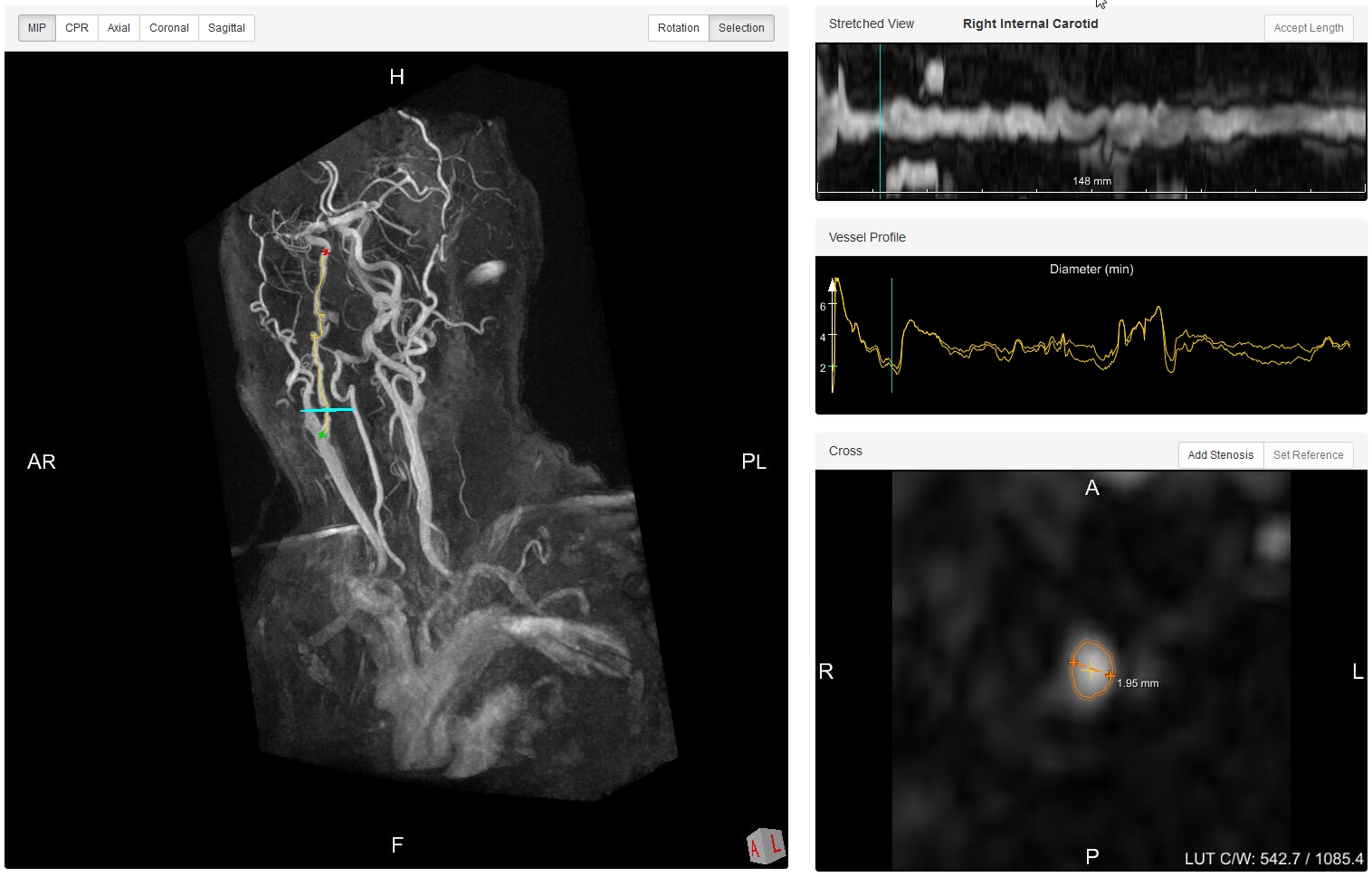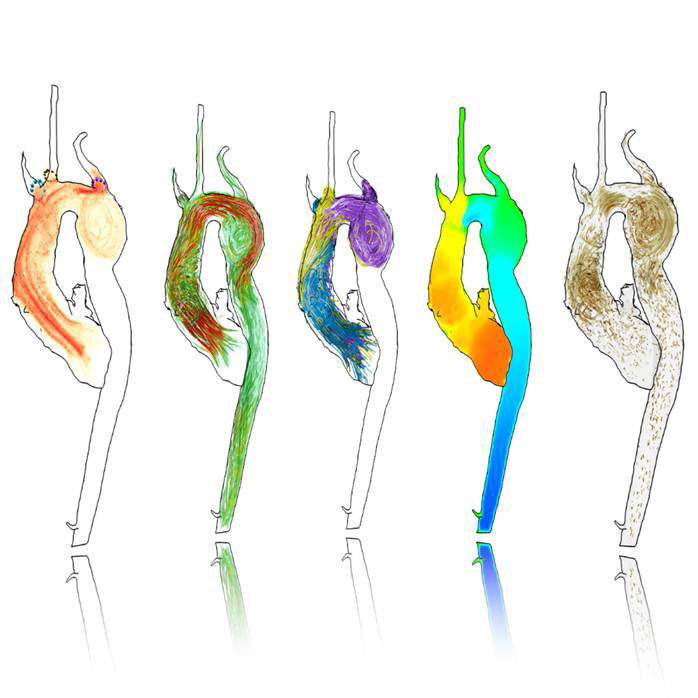Clinical Challenges in the Diagnosis of Vascular Diseases
The assessment of local vasculature and hemodynamics is essential for a variety of tasks related to diagnostics and therapy planning. It can be based on anatomic and functional image data from US, CT and MRI. The complex and complementary data can be acquired to assess structure, vessel wall and plaque morphology as well as blood flow patterns. The combination of the complex multimodal image data towards the assessment of disease patterns and progression is challenging. It raises the need for meaningful visualizations as well as quantitative measurements in order to support detection, assessment and follow-up inspection of diseased vascular regions.
 Fraunhofer Institute for Digital Medicine MEVIS
Fraunhofer Institute for Digital Medicine MEVIS

